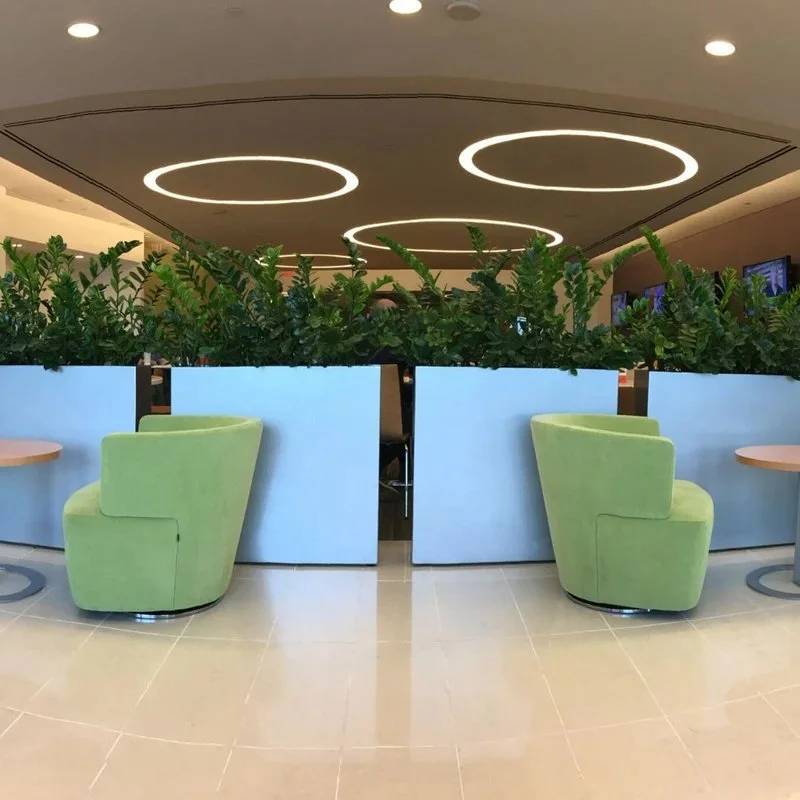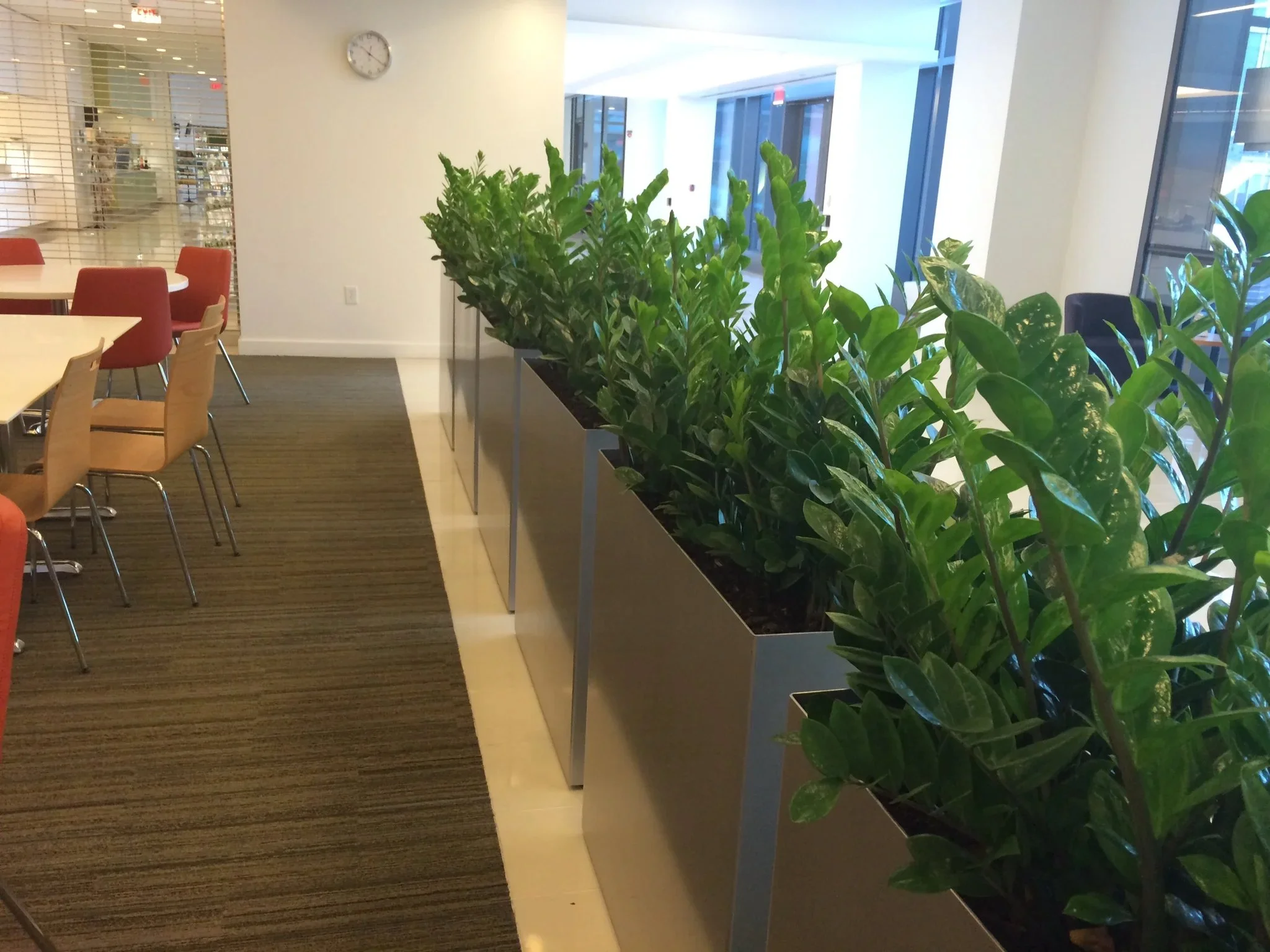How to Create Hospital Landscape Design That Helps Patients Heal
Research has shown that having strategic landscape design in hospital environments can support physical, psychological, and emotional benefits that help speed up the healing process in patients.
Could hospital landscape design actually help patients get healthier faster? While it might seem far-fetched, extensive research has proven it to be true.
Ask yourself: what comes to mind when you think about hospitals?
If you’re like most people, you might think of them as daunting places that are only visited in emergencies. However, they are also for routine surgeries, baby deliveries, or flare-ups from chronic issues. And, hospital landscape design can make these buildings feel more hospitable, comforting, and stress-free, in turn helping patients heal more quickly.
Here’s why.
The Healing Power of Hospital Landscaping
To understand how hospital landscape design can benefit patients, you need to know the physical, psychological, and social factors that have been proven to impact patient recovery and how strategic landscaping can support them.
Physical Benefits
A renowned study by Robert Ulrich examined 46 patients in a Pennsylvania hospital who had all undergone the same surgical procedure. Half of these patients were assigned a recovery room with a window view looking out onto a natural scene while the other half were assigned to rooms with windows facing a brick building wall.
The study found that patients in rooms overlooking a natural setting had shorter postoperative hospital stays, received fewer negative evaluative comments in nurses’ notes, and took fewer potent painkillers than the patients in rooms facing the brick wall.
Psychological Benefits
How strong is the mind’s influence over the body? According to a study conducted in London by the Bow Centre, it’s significant.
Their research showed that high blood pressure and heart activity caused by stress could be decreased if patients are exposed to natural scenes, such as flowers and cutting gardens. This is attributable to the fact that these scenes engage them, drawing their focus away from themselves and disturbing thoughts, in turn contributing to their recovery.
They also found that patients are overwhelmingly in favor of well-designed hospital landscapes because of their positive psychological effects and the chance to pass the time there.
Social Benefits
Studies have shown that patients with strong social support networks typically experience less stress, better health, and better recovery and survival rates for various conditions than those who are isolated. Social support improves immune functions and moods and results in better compliance with treatment.
In fact, research from The Center for Health Design found evidence that natural environments in health care facilities contribute to social integration by providing spaces for social interaction and support for patients, families, and staff.
7 Factors of Outstanding Hospital Landscaping
Extensive research has proven the potential benefits offered by hospital landscape design. But what exactly does that look like in the real world, and how can landscape designers and architects apply this knowledge to their designs?
There are seven key factors to consider.
Accessibility
It’s great to have a beautiful perennial or annual garden area, but people need to know it exists and, most importantly, be able to access it regardless of their mobility level.
Visibility
The more visible an outdoor space is, the more likely it is to be used and, in turn, to benefit patients and hospital visitors. It’s wise to clearly indicate its existence from the hospital’s main entrance and at various locations throughout the building. It’s also important for it to be visible from patients’ rooms so they can enjoy it even if they can’t access it.
Variety of spaces
Providing patients with a sense of control over their surroundings can help reduce elevated blood pressure and increase immune system operation, among other things. You can offer them a sense of control over their experience in the outdoor area by including a variety of pathways, nooks, outdoor furniture, and resting spots.
Because of the variety of illnesses and surgeries faced by patients at hospitals, such as burn wounds or the need to take medications that can make them sensitive to sunlight, you should also consider both sunny and shady areas as well as spaces shielded from the breeze by plants or structures.
Security and Safety
Hospitals can often drum up feelings of vulnerability, both for patients and their families, so it’s important to make sure you include things in your hospital landscape design that encourage a sense of safety and security. This can be things like sufficient lighting, public phones, handrails, and seating at frequent intervals.
Noise Levels
An outdoor space designed for therapeutic purposes should avoid excessive noise. During the design phase of your hospital landscaping process, choose an area that is located away from things like traffic, parking areas, delivery driveways, and helicopter pads as well as the sounds of air conditioners, public announcements, television sets, and trolleys and gurneys.
The sounds in these areas should be reassuring – like birds, wind chimes, or flowing water.
Familiarity
For both patients and their families, hospitals are unfamiliar environments, and this can be stressful. Adding familiar touches, such as aspects of nature, can help reduce these stresses.
Flexibility
Design your space based on when, how, and by whom it will be used. This includes looking at them from a year-round perspective, including different seasonal blooms and colors. You should also consider how your outdoor space can be used in different weather conditions.
Tips for Planting Designs for Hospitals
Greenery and plant life are some of the most vital components of great hospital landscape design. But picking the right ones requires some strategy.
Here are five tips to help guide your decision.
Evaluate Maintenance and Upkeep
Look for plants that require minimal watering and can tolerate seasonal climate changes. You’ll also want to consider the location of your outdoor space so that you can select plants based on the amount of light available. In addition to selecting plants for lighting, planting perennials and xeriscape plants might be more suitable than having to plant annuals every year.
Incorporate Scents and Colors
By incorporating brightly colored flowers and leaves along with plants that give off scents, you can make sure your outdoor space appeals to everyone.
Our sense of smell has been proven to have a profound connection with memories and feelings, making it helpful for people with memory loss. Sensory stimulation is also particularly important for those with visual impairments and those with reduced cognitive function.
Consider Mood and Ambiance
When you’re planning your outdoor space, think about its ambiance holistically. For instance, an atmosphere with large trees may feel dark and impact the mood of the space. So, a light and sunny ambiance may be better.
Look for seasonally changing flowering trees, shrubs, perennials, and vegetation that provide contrast and harmony through textures, forms, and colors.
Avoid Hazardous Plants and Locations
It may seem intuitive, but it’s wise to stay away from plants that are thorny or hazardous, as well as those that might drop slippery fruit or leaves. It’s also important to ensure plant life doesn’t obscure walkways.
Landscape Design Ideas for Hospitals
There are some simple but impactful steps you can take to amplify your outdoor space and the value it brings to patients, families, and staff.
Use Plants and Features that Attract Wildlife
Get to know the plants that are native to your area and try to incorporate them into your hospital landscape design. For instance, plant species that attract butterflies can bring a sense of calm to your space. You can also use things like birdbaths, bird feeders, or trees that are suitable for nesting to attract birds.
Use Planters and Elevated Gardens
Raised planter boxes and elevated garden beds can be designed for the use of patients in wheelchairs. You can also use grounded planter boxes, such as bottomless retention edging planters to expand the area of your outdoor space at minimal cost.
Your best option for planters for your hospital landscape design are those made with fiberglass or powder-coated aluminum since they’ve both extremely durable and require minimal maintenance.
PureModern also offers custom planters that can be tailored to fit the exact specifications of your hospital landscape design project.
Include Design Features
Outdoor spaces that appeal to all five senses are ideal in hospital environments. So, in addition to colorful and nicely scented plants, you can also incorporate design touches, like water and fire features, that contribute to a sensory experience.
Our Hospital Landscape Design Projects
PureModern has had the privilege to work on a number of hospital landscape design projects, including the National Cancer Institute in Rockville, Maryland.
On this project, we provided metal planters to separate a sitting area from a large hallway. These large planters created a living partition using the popular Zamioculcas zamiifolia (ZZ plant).
To learn more abouthospital landscape designand how to create spaces that benefit patients, families, and staff,contact us to speak with one of our experts.





